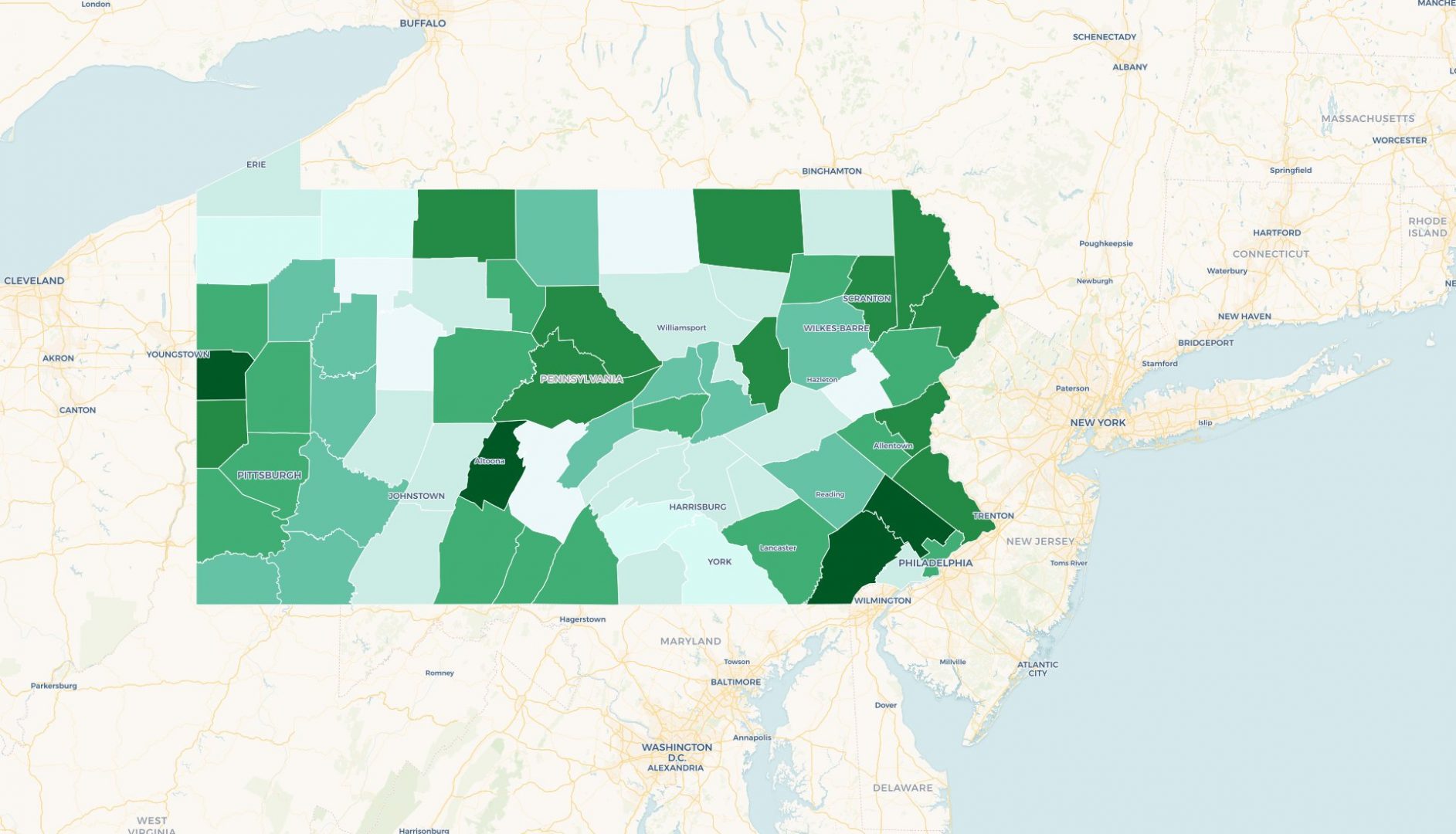
Midterm voter turnout increased up statewide in Pennsylvania from 43 percent in 2014 to 58 percent in 2018.
Emily Previti / Keystone Crossroads

Midterm voter turnout increased up statewide in Pennsylvania from 43 percent in 2014 to 58 percent in 2018.
Emily Previti / Keystone Crossroads

Emily Previti / Keystone Crossroads
Midterm voter turnout increased up statewide in Pennsylvania from 43 percent in 2014 to 58 percent in 2018.
Todd Gontz, who reads PA Post’s newsletter “The Context,” had a skeptic’s question for us Thursday morning:
Is PA Post going to run an article entitled “What would it take for Pa. Republicans to take the Senate?”
He’s asking because the newsletter’s subject line was: “What it would take for Pa. Democrats to take the Senate”
And he thinks we might not be what we claim to be — nonpartisan — because, he implies, that subject line signals we’re pulling for Democrats.
My impulse was to email Todd back and note that Republicans have held the Pennsylvania Senate majority since 1994. So …
I didn’t hit “send,” though, because Todd actually brings up a good point about news reporting that we ought to talk about.
First, just to clear the decks, we’re not pulling for Democrats. (Or any party.)
Second: That subject line has deep roots in high-interest news about today’s political landscape and, perhaps, the future direction of the state and the country.
Those roots go deeper than this, but we can start with President Trump’s 2016 victory, which heralded a much-studied political shift in the U.S. and among particular states. One of them was Pennsylvania, where the GOP presidential candidate hadn’t won since 1988.
Trump won Pennsylvania by about 68,000 votes out of about 5.9 million cast. So, it was tight.
The state is considered crucial to Trump’s 2020 re-election bid … and just as crucial to the Democratic nominee. Because 2016 was tight, political parties and interested observers are scrutinizing Pennsylvania to look for clues of what might be next.
They’re finding pieces of the story.
Just over a year into Trump’s first term, Democrat Conor Lamb won a special election to represent a southwestern Pennsylvania district in Congress — a seat previously held by a Republican.
Eight months later, the Democratic party picked up four Pennsylvania Congressional seats, changing the state’s U.S. House delegation from a 13-5 GOP advantage to a 9-9 split. That helped Dems win a majority in the U.S. House of Representatives.
Then came Tuesday’s special election in a state Senate district in southwestern Pennsylvania — another race that political observers were watching to see if a Democrat could flip a Republican seat.
And it was another Democratic party win.
That’s why the headline on today’s Context made news sense: Since Trump flipped Pennsylvania in 2016, pieces of it have been flipping back. Will the trend continue? If so, where, how and why?
Those aren’t partisan questions. They are the foundation of an ongoing news story in this state and in the U.S.
News, by definition, is often what’s different, unusual, unexpected or revealing; and something that has or could have a significant impact on the world we live in.
Trump’s victory ticked a lot of those boxes. So does the Democratic resurgence. As PA Post reporter Ed Mahon noted in the newsletter, even a GOP strategist responded to Tuesday’s special election result by pointing out key Republican seats to watch.
For PA State Senate 2020 all eyes turn to 9th/15/49 and 19th/37/45… #papolitics
— Christopher Nicholas (@Eagle63) April 3, 2019
That’s where we’re coming from with a subject line like “What it would take for Pa. Democrats to take the Senate.”
We may well do a story headlined “What it would take for Pa. Republicans to hold the Senate.” It wouldn’t be a partisan story. It would just be a good news story.

Sometimes, your mornings are just too busy to catch the news beyond a headline or two. Don’t worry. The Morning Agenda has got your back. Each weekday morning, host Tim Lambert will keep you informed, amused, enlightened and up-to-date on what’s happening in central Pennsylvania and the rest of this great commonwealth.
The days of journalism’s one-way street of simply producing stories for the public have long been over. Now, it’s time to find better ways to interact with you and ensure we meet your high standards of what a credible media organization should be.